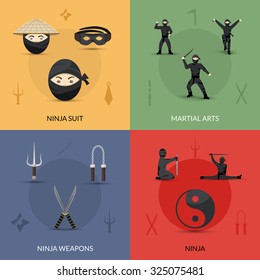Exploring The Rich Heritage And Spiritual Measurement Of Fighting Style: A Detailed Evaluation
Exploring The Rich Heritage And Spiritual Measurement Of Fighting Style: A Detailed Evaluation
Blog Article
Writer-Adkins Montoya
Step into the ancient world where martial arts were substantiated of necessity in varied areas. Societies crafted unique fighting designs intertwined with historic contexts. Strategies advanced over centuries with devoted method and cultural exchanges. Today, modern-day martial arts blend conventional components for optimal efficiency. Philosophically, martial arts stress self-control, self-improvement, and consistency. Respect, humbleness, and equilibrium are foundational concepts assisting experts in the direction of growth and resilience. Check out the depths of this abundant background and approach to discover the profound influences shaping this enduring discipline.
Origins of Fighting Style
Fighting style came from different regions all over the world, progressing as functional combat systems to resist dangers. These old battling styles were created out of need, with each society crafting techniques matched to their special environments and challenges. From the grappling arts of Jujutsu in Japan to the striking techniques of Kung Fu in China, martial arts were deeply linked with the historical, social, and cultural material of their particular cultures.
In Japan, the samurai course refined martial arts like Kenjutsu, the art of the sword, which later on advanced right into the extra promoted form of Kendo. Meanwhile, in Brazil, Capoeira became a blend of dancing and combat, developed by enslaved Africans as a way to stand up to injustice. Each martial art brings with it an abundant background and ideology, reflecting the values and ideas of the people that exercised them.
As you explore the beginnings of martial arts, you uncover a tapestry of human resourcefulness, resilience, and the stubborn spirit of warriors throughout time.
Advancement of Techniques
With centuries of practice and improvement, combat strategies within different martial arts have actually gone through a profound development. From old designs like Martial art and Karate to much more modern-day self-controls such as Brazilian Jiu-Jitsu and Krav Maga, the development of strategies has actually been driven by a combination of cultural impacts, functional applications, and technological improvements.
One considerable facet of this advancement is the cross-pollination of strategies in between different martial arts. As an example, techniques from standard Japanese Jiu-Jitsu were integrated into the development of Judo by Jigoro Kano in the late 19th century. This mixing of styles has actually brought about the advancement of hybrid martial arts like Mixed Martial Arts (MIXED MARTIAL ARTS), which integrate elements of striking, grappling, and submission strategies.
In addition, the evolution of techniques has been shaped by the boosting focus on efficiency and efficiency in combat. Experts have actually continually looked for to refine their methods via extensive training, testing, and competitors, causing the development of very specialized and efficient battling styles. On the whole, the evolution of techniques in martial arts reflects the vibrant nature of battle and the continuous pursuit for renovation and technology.
Philosophical Foundations
Checking out the underlying philosophical concepts of martial arts gives insight right into their core worths and directing beliefs. At the heart of many martial arts self-controls is the principle of technique itself. By educating how to create a martial arts curriculum for kids and body to function as one natural device, you grow self-control that extends past the dojo or health club into day-to-day life. This self-control encompasses respect, humbleness, and self-discipline, forming not simply your physical capacities however likewise your character.
One more fundamental thoughtful foundation in martial arts is the idea of constant self-improvement. The trip of grasping a fighting style is never-ending, with specialists constantly striving to much better themselves, both literally and mentally. https://rowanqhajt.answerblogs.com/31321032/the-role-of-martial-arts-in-fostering-respect-and-compassion-among-kid on growth promotes strength, willpower, and a development way of thinking that can be related to all aspects of life.
In addition, martial arts emphasize the relevance of harmony and equilibrium. Methods are developed to make use of a challenger's energy versus them, highlighting the concept of producing and redirecting pressure as opposed to satisfying it head-on. This viewpoint includes social relationships, advertising peaceful resolutions and good understanding. By embracing these thoughtful foundations, martial artists not just improve their fight abilities but also cultivate a lifestyle centered on individual growth, regard, and harmony.
Conclusion
To conclude, the background and viewpoint of martial arts use an abundant tapestry of custom, technique, and self-improvement.
Take for instance the story of Bruce Lee, who transformed martial arts by mixing different styles and viewpoints to develop his very own unique form of Jeet Kune Do.
With commitment and innovation, martial musicians remain to press boundaries and influence others to reach their complete potential both in combat and in life.
